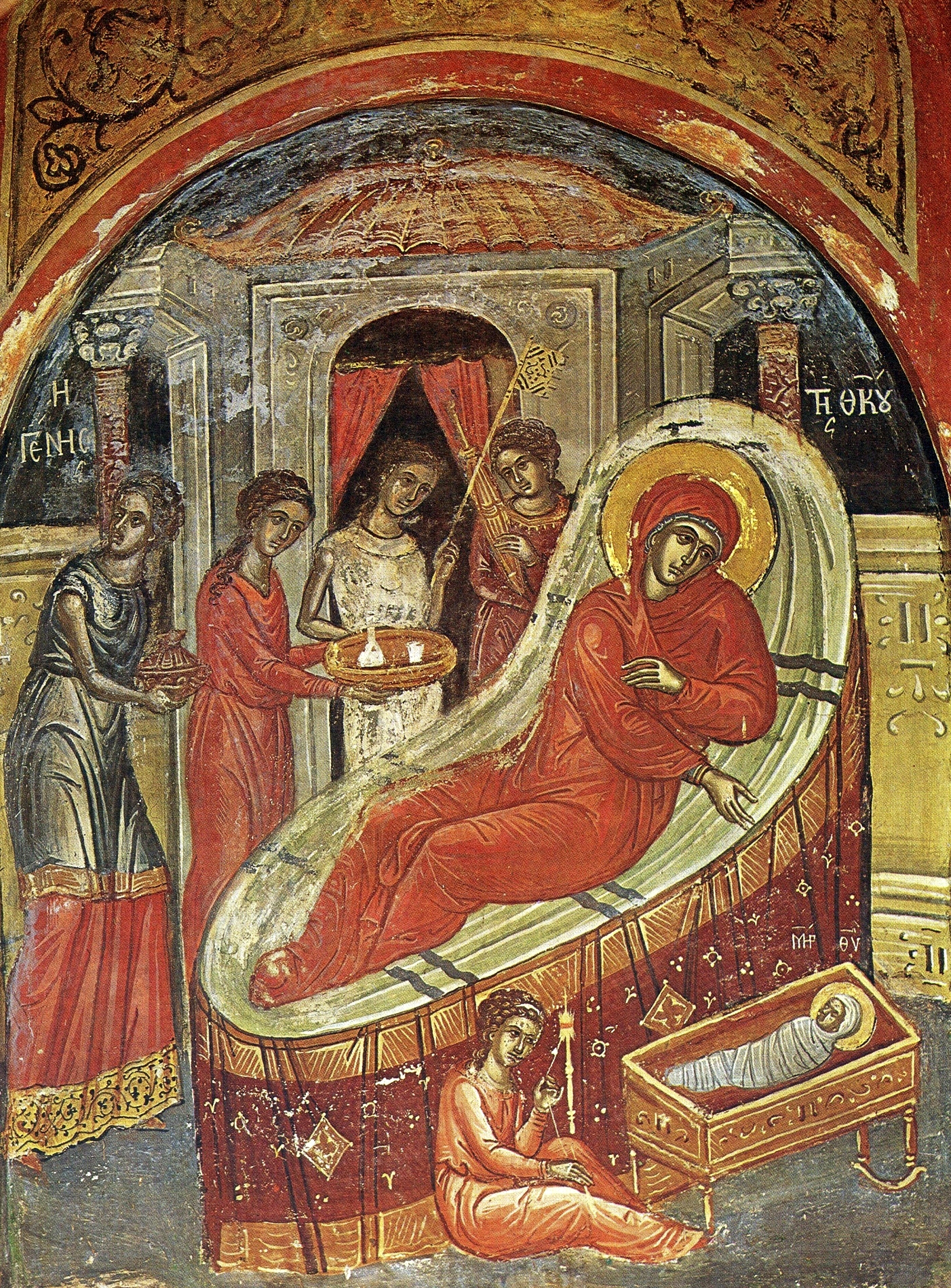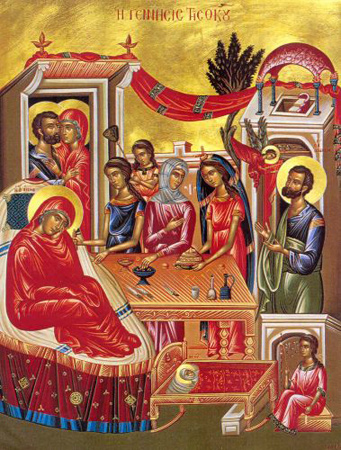 The Birth of the Virgin, celebrated on September 8, is not narrated in the Holy Scriptures. The lack of information about the birth and life of the Virgin reveals the discretion and humility of the Virgin Mary. It is the first Red Cross holiday in the new church year, which begins on September 1.
The Birth of the Virgin, celebrated on September 8, is not narrated in the Holy Scriptures. The lack of information about the birth and life of the Virgin reveals the discretion and humility of the Virgin Mary. It is the first Red Cross holiday in the new church year, which begins on September 1.
The information on the Birth of the Mother of God is taken from non-canonical or apocryphal writings, such as Jacob’s Proto-Gospel, a Judeo-Christian work of the second century. From this writing we find that Joachim and Ana were advancing in life and lacking children. Though elders, pray that God will give them a child.
I dare ask what we call “impossible”: parents at a very old age. God listens to their prayer, and so Ana, a stearpa woman, gives birth to the Mother of God.
We mention that other ancient Old Testament women are fond of giving birth to children in a wonderful way. But all of them gave birth to boys, only Anah, Joachim’s wife, will give birth to a girl whom the Son of God chooses to be his mother.
Saint John Damascene gives us the following answer to the question: Why was the Virgin born of a stearpa woman? Because the only new thing under the sun, the beginnings of miracles, should be premeditated by miracles and slowly, of the humblest to give birth to the greatest. But there would be one more thing. By the birth of Mary, nature prevailed by grace and remained obedient, unwilling to take it forward. The flesh waited unfruitfully until the grace flourished.
The Birth of the Mother of God brings joy to everyone as the tropar celebrates this holiday. If Eve brought the curse into the world, Mary brought the blessing; if Eve brought death to the world, Mary brought the True Life; if Eve was the cause of the fall, Mary through obedience and humility became the cause of blessing and joy.
The Icon of the Birth of the Mother of God
 In the icon of Nativity of Our Lady, Saint Ana supports his head on his left hand, a sign of misunderstanding of the mystery. Look at his daughter and can not explain the miracle. She is represented on the bed, surrounded by some young women who rush to give him food.
In the icon of Nativity of Our Lady, Saint Ana supports his head on his left hand, a sign of misunderstanding of the mystery. Look at his daughter and can not explain the miracle. She is represented on the bed, surrounded by some young women who rush to give him food.
In some icons, the meeting of Joachim and Ana is also given after the angel announces that they will acquire a baby. The two parents hug and kiss in the door of their house. St. Ana tells her husband, according to the Proto-Gospel: “Now I have known that the Lord God greatly blessed me …”
If Saint Ana is on the left side of the icon, on the right is Ioachim in prayer. At this holy moment the angel found him, which brought him the joyous news.
The colors of the garments and the architectural elements are lively, the bright faces, as it was at the birth of a baby after many years of waiting.
Brief History of the Birth of the Lord
The Feast of the Birth of the Mother of God is also present in Egyptian cops and Syrian Jacobs, separated from the Orthodox Church after the Fourth Ecumenical Council (451). This is why the celebration was already in use to them before this separation. Its beginning must therefore be established between the Ecumenical Council (431) and the Ecumenical Council (451).
In the West, the feast was adopted during Pope Sergius I (687-701). In the sixth century, the Holy Roman Melodus composed the contakion and the ikos of this feast, and in the 8th century St. John Damascene made up the canon that is played at the service of Matins. September 8, chosen for the feast, is the day of the sanctification of a church dedicated to the Virgin Mary in Jerusalem by the Empress Eudoxia at the beginning of the 5th century.
The name Maria
The name “Mary” comes from the Hebrew “Aia,” meaning “Lord,” and she interprets “Lady,” because she rules and masters the heavenly and earthly Mother of God.
